What Is the Best Guitar Multi Effects Pedal?
This overview is intended to give readers a cross-section of some of the most well-known and popular commercially available brands and units for use as portable headphone and recording units as well as those units that are essentially programmable multi effect pedal boards.
In 30+ years of performing and recording, I have had the good fortune to use many of them and even own several of them, from their genesis in the early 1980s through to the present.
As bass multi effects are a completely separate category better left for another article, this overview will focus solely on guitar-oriented units (which can also be used for other instruments, such as keyboards, violin, etc.).
Multi effects units require attention to programming detail to achieve the best results. Good luck on your choices, and keep in mind that any multi effects unit can help you to create your own sound as well as replicate those of popular ones on records if you can take the time to work with the tools and parameters at hand.
Line 6
Probably no other company on this list has a name as ubiquitously associated with guitar effects and modeling than Line 6 (https://line6.com/multi-effects/). Founded by former Oberheim synthesizer engineers Marcus Ryle and Michel Doidic in 1996, Line 6 is the undisputed leader in digital amp and effects processing technology.
Their amp Vetta, Spider, Amplifi (Bluetooth wireless) and DT tube amps (a joint venture with Bogner) have become international bestsellers, but their portable POD units are unquestionably the products that broke them worldwide. Although acquired by Yamaha in 2013, Line 6 continues to maintain its cutting-edge market leadership position with its latest Helix multi effects board.
Line 6 Helix
Tweaking of individual patches can easily be conducted via footswitch.
The Helix is very expensive, but the demand for it has continued to make it a waiting list item for many retailers. Line 6 has set a new high bar with the Helix, not only for its unparalleled sound quality and flexibility but its ability to accommodate external pedals as well within its routing system.

Credit: Line 6
The combination of amp, distortion, cabinet, compression, modulation, delay, reverb, pitch detune and other parameters is limited only by the player’s imagination. There is insufficient space in this article to go into all of the many options a player can utilize, but its built-in distortions and response have received raves from many as to its organic and analog feel while retaining the flexibility of digital.
Tweaking of individual patches can easily be conducted via footswitch, for ease of customization on the fly. The USB connection allows all patches and presets to be stored in the cloud for backup and recall purposes. Although there is a bit of a learning curve, it is more intuitive than some other designs, including Line 6’s own M5 and M9 series, which have multiple uses for each of its scant knobs and many programming windows that can easily lead one to get confused or lost as to which parameter they are in.
The Helix is simply an incredible technological achievement. Butch Vig of Garbage and Robbie Calvo are probably the most visible users of the Helix live to date.
Line 6 Pocket POD Guitar Amp Simulator
The USB connection offers over 3000 presets created by users around the world available for download.
Going 180 degrees in the opposite direction from the Helix, the Line 6 Pocket POD is the latest version of their landmark portable unit. The POD platform has been used by many artists for stage, recording, and demos, including Pete Townshend, Jerry Cantrell, The Edge, and Omar Rodriguez-Lopez, among others. Contemporary Christian Music superstar Lincoln Brewster is well known for his use of Line 6 POD units for his sound, which has led to the practice of many churches eschewing amps on stage.

Credit: Line 6
The Pocket POD is quite a bit smaller than past units (about the size of a couple of iPhones stacked) and boasts custom presets from a host of popular contemporary guitarists, such as James Valentine of Maroon 5 and 311’s Tim Mahoney. The Pocket POD’s amp latest library of models includes many of their standard vintage Fender, Vox and Marshall sounds, along with a few newer ones, such as a blend between a Marshall JTM-45 and a Budda Twinmaster and a Dumble Overdrive Special.
The USB connection offers over 3000 presets created by users around the world available for download, in addition to software to fine tune any customized setting one may create. Effects choices include compressor, tremolo, chorus 1 & 2, flanger 1 & 2, rotary speaker, and reverb, all with or without delay. Operates from four AAA batteries or 9v AC power.
Although it is a far humbler device than its Helix cousin, the Pocket POD is an excellent headphone practice amp, demo recording device, and can also serve as a tone source platform for gigs in a pinch.
Tech 21
While digital modeling has become widely utilized by many companies, the only ones actively making products based upon an analog modeling platform are Peavey and Tech 21. New York-based Tech 21 was founded by Andrew Barta in 1989, and when his initial Sans Amp design was turned down by all of the major pedal manufacturers at the time, Barta put it out on his own and revolutionized the direct recording and home recording industries, spearheaded by the Sans Amp’s tube amp emulation platform.
It has since become a hugely popular device and has been used by many professional artists and producers, ranging from Los Lobos, Tony Visconti, Neal Schon, Tchad Blake, and others. Tech 21 has since released an ever-expanding line of high-quality effects stompboxes along with some outstanding modeling specialty pedals that use their proprietary analog circuitry to mimic such popular amps as classic Orange, Hiwatt, Vox, Mesa and Fender models.
Tech 21 Fly Rig 5
The Fly Rig 5 is a wonderful multi-effects pedal and potential gig saver for guitarists.
While the Sans Amp has become an almost ubiquitous studio tool, Tech 21 developed the Fly Rig 5 as a dependable analog, no-nonsense stage performance tool. A sturdy, self-contained metal unit under a foot long and just 2.5” wide weighing 18 oz., the Fly Rig 5 has all of the meat and potatoes sounds most gigging musicians need: a solid clean amp platform with reverb, a distorted amp sound, a tap tempo delay, and a preset volume boost for solos – all foot switchable.

Credit: Tech 21
With its sleek design requiring no additional external patch cables except an in and out, each section has illuminated knobs in different colors for easy viewing on a dark stage. The clean amp platform is a Sans Amp circuit that closely models a black-faced Fender Deluxe and has a drive knob for some grit.
The reverb is based on Tech 21’s Boost RVB pedal and emulates a classic spring reverb. The high gain amp section is based on their Hot Plexi 1968 Marshall Plexi modeling pedal sound. The Hot solo boost setting delivers up to +21 dB of preamp gain for either or both the clean and distorted amp channels as well as the Delay. The luscious delay is a tape delay emulation from Tech 21’s Boost DLA pedal and has a drift control to simulate tape wow and flutter as well as a tap tempo.
The Fly Rig 5 is a wonderful tool and potential gig saver for guitarists, especially those who tour and have to rent their backlines from city to city, meaning the quality of amps that may be available for gigs can vary widely from very good to almost unusable.
Wilco’s Nels Cline cites his use of the Klon Centaur overdrive precisely for this dilemma. Several guitarists have raved to me about how the Fly Rig 5 saved them throughout tours where they might wind up with a solid state Univox amp from the 70s or some other gear that would have put out anemic tinny sounds without the Fly Rig 5.
The success of the Fly Rig 5 has spawned a family of other Fly Rig units, including a Bass, a Ritchie Kotzen signature model, and a Fly Rig Brit (based on their Brit modeling pedal of Marshal Bluesbreaker and Marshall Plexis) and Cali (based on their Cali modeling pedal of Mesa amps).
Vox
Founded by Tom Jennings in Kent, England in 1947, Vox is one of the oldest UK music equipment companies still in existence, though owned by Korg since 1992. Incorporating an amp design by Dick Denney, the Vox AC-15 amp made its debut in 1958 and went on to international acclaim when the AC-15, AC-30 and other models fueled the British Invasion of the 60s with music from The Beatles, The Rolling Stones, The Kinks, and others, to continue with Queen, U2, Elvis Costello to a currently wide range of artists on both sides of the Atlantic.
Vox’s entry into the amp modeling arena has been their acclaimed Valvetronix series. Using Korg’s REMS software (which was the platform for the successful Pandora multi effects series) and a 12AX7 tube preamp with solid state power amp platform, the Valvetronix series has been a surprise hit, with remarkably versatile, organic sounds, and solid effects.
Their Tonelab series of multi effects pedal boards effectively put the Valvetronix platform into a portable unit. However, these are currently unavailable, but the lower cost Stomplab series boasts very similar sounds, but without the tube preamp and multiple footswitches of the former.
Vox Stomplab 2G
Built-in expression pedal serves triple roles as a wah and volume pedal also, and a built-in tuner completes the package.
The Vox Stomplab 2G comes chock full of features, including their modeling variations on the Roland Jazz Chorus and 43 classic amps from Fender, Mesa, Marshall, Dumble, Peavey, and others. There are also 12 different cabinet model configurations, a 4 x 12 with Celestion reenbacks, a Fender Tweed Champ 1 x 8 and Bassman 4 x 10, and a Blackface Twin 2 x 12.

Credit: Vox Amps
The 18 overdrive and distortion selections include models of the famous Vox Tone Bender made famous by Jeff Beck, a germanium Fuzz Face, the Ibanez Tube Screamer, and an Orange amp simulation. Chorus, Flanger, Phaser, Tremolo, Rotary Speaker, Pitch Shift, and Envelope Filters effects are featured, along with Compressor, Wah Wah, Univibe, Ring Modulation, and a small collection of delays, echoes and reverbs.
A built-in expression pedal serves triple roles as a wah and volume pedal also, and a built-in tuner completes the package. 20 user memory slots are available to store custom programs in addition to the 100 factory presets.
Powered by four penlite batteries or 9 v AC adapter, the Stomplab has an impressive amount of sonic processing power under the hood for under a C note. While it has limitations in program choices compared to other small units and lacks a USB port for further fine-tuning and storage of its sounds, the Stomplab delivers excellent bang for the buck in a very ergonomically friendly package.
The three old school chicken head knobs very clearly indicate which parameter is selected, while the other two dial in the amount of each effect. 2 footswitches for shifting programs up or down, keeps the entire unit easily operational. If the expression pedal is not needed, the 1G model is available.
A word about Korg – the Tokyo, Japan-based Korg is one of the foremost electronic musical instrument and sound processing companies in the world, responsible for many innovations with keyboard synthesis, Digital Music Workstations, and various rack-mounted units for audio processing onstage and in the studio.
The first multi effects unit was their Tone Works Pandora PX-1, which was roughly the size of a smartphone and contained a selection of overdrives, distortions, amp models, cabinet simulations, and compression, modulation, delay, and reverb, along with a noise gate, metronome and tuner. It had sounds that rivaled and in some instances, were less digital sounding and superior to the POD, which fueled its subsequent success.
The Korg Pandora series’ current incarnations are in the form of a stomp box tuner and multi effects unit and a pocket-sized mini unit. The have unsurprisingly comparable sounds to the Vox Stomplab but are harder to find among most retailers at present. It would appear that Korg is focusing its marketing efforts to promote the Vox-branded REMS effects.
Boss
Korg has had a nearly half-century long rivalry with the other Japanese electronic musical instruments powerhouse: Roland. A cutting edge company responsible for some iconic synthesizers and drum machines, especially the TR-808, which has since become a staple of hip-hop music, Roland has long had an in-house focus on guitar gear and effects, unlike Korg, whose presence in the guitar arena is more through its international distribution arrangements for amplifiers, such as Marshall and Blackstar.
While the Roland brand has graced its highly rated Jazz Chorus and Cube series amps (used by such luminaries as Andy Summers, The Edge, Adrian Belew, Eric Johnson and Robert Fripp, among others), all other guitar-related gear is marketed under its Boss brand division.
Boss is arguably equal to MXR and Electro Harmonix, if not surpassing them in its influence on the current guitar effects industry. In addition to its prized early CE-2 chorus pedal, their OD-1 Overdrive, DS-1 Distortion and HM-2 Metal pedals, are some of the largest selling in history.
The size of their pedals, the ergonomic design, including location of knobs and jacks, and other factors have had a profound influence on the next generation of pedal makers.
The list of Boss pedal users is enormous, but players of note include, to name a few:
- Prince
- Joe Satriani
- Steve Vai
- Johnny Marr
- Jonny Greenwood (Radiohead)
Boss ME-80
Boss is no stranger to multi effects as well, and their COSM (Composite Object Sound Modeling) platform, which is Roland’s proprietary approach to modeling and sampling for its amps and keyboards, is also utilized in their multi effects units. Taking a bit of a retro approach to multi effects pedals, Boss offers the ME-80, which features the guts of an arsenal of Boss stomp boxes inside a single pedal board, but retains the knobs and intuitive ease of operation that has endeared the Boss brand to so many thousands of players.

Credit: Boss
With a host of COSM amp type choices, most of the popular Boss overdrive and distortion effects, EQ, modulation effects, compression, filter, pitch shift, octave, delay, reverb, a “defretter” program to simulate a fretless instrument, and a 38 second looper, along with an expression pedal, USB port for connection to the Boss Tone Studio cloud software and 99 memory slots for storing programs, it is a thrilling package.
A cut-down version of the ME-80 with fewer options, the Boss ME-25 is available for about $100 less.
For players (myself included) who do not relish spending precious time with a guitar in hand scrolling through menus on a small LED screen trying to program sounds, the ME-80 is much more familiar territory and a commensurately more productive tool.
Boss GT-100
Includes MIDI, A/B channel divide for wider stereo sound effects and frequency based effects assignment.
That’s not to say that Boss does not offer units with fewer knobs but more digital processing options. Designed to compete head to head with Line 6’s POD 500X series multi effects pedal, the GT-100 includes MIDI, A/B channel divide for wider stereo sound effects and frequency-based effects assignment, and foot pedal controls over changing parameters.

Credit: Boss
The COSM platform, stomp box sounds and features of the GT-100 are identical to that of the ME-80 but has a somewhat larger menu of choices, as well as the added MIDI and routing capabilities.
For a smaller, less elaborate package, the Boss GT-1 can also be a good option.
Digitech
Based in Utah and currently owned by Harman Music Group (owners of JBL and Harman Kardon stereo, among other divisions), which will soon be owned by Samsung, Digitech was founded in 1984 and among its first products were Johnson Amps, which was the prime competitor to Line 6 and their Axys model.
Both were the among the first modeling amps to be commercially marketed. Johnson had some fans, including Adrian Belew, but it failed to take hold with the public, unlike Line 6, due to reliability, lack of ergonomics and higher cost issues, in spite of what some claimed was a superior sound at the time.
This is a debate that was concurrently echoed in the keyboard sampling industry between Fairlight and Synclavier. Johnson also issued a desk top Johnson amp in a box multi effects unit called the J-Station, which would later serve as a template platform for Digitech’s RP multi effects series, which effectively put them on the map as a serious contender when the RP-1 debuted in 1992.
Although housed in plastic, the RP series of multi effects pedals housed an impressive collection of distortion, modulation, and time-based effects in an easy to program format. The silver and blue units sold for a significantly low enough price to capture a large chunk of the beginner and student markets, many of whom were part of the iPod and post-Walkman generation, who were perfectly at ease using small headphones for listening in relative quiet.
They have continued to evolve their product line and remain at the forefront of guitar effects with their revival of the DOD brand, Hardwire, and Digitech branded Whammy, JamMan, and other devices.
Digitech artists include Steve Stevens (Billy Idol), Jennifer Batten, Johnny A., Taking Back Sunday, Warren Cucurullo, Pete Anderson, Johnny Hiland, Chris Broderick and Herman Li (Dragonforce).
Digitech RP1000 Guitar Multi Effects Pedal
Built in Whammy, 40 tone and 40 effects libraries.

Credit: Digitech
Taking the RP series to its latest culmination, the RP1000 is a heavy duty unit designed for recording and stage, and has XLR stereo outs as well as unbalanced ¼” jacks.
It features a 2 x 12 USB audio streaming, 40 tone and effects libraries, a built in Whammy, 40 tone and 40 effects libraries, 5 seconds of delay, and a 20-second looper. And most importantly, a stompbox style footswitch array that allows for a number of innovative routing schemes, which can equate to 5 separate pedal boards. There are also bypass modes that remove the amp and cabinet modeling for using just the effects with an external amp.
While Digitech has a number of scaled-down versions of the RP1000, their updated version of their initial RP series design is currently available as the RP-55, which sports the same footswitch and programming features, along with a built-in drum machine, 40 presets and 40 user memory slots, 20 effects with up to 8 simultaneously, battery or AC operation, a great deal for a Holiday present to give to a budding guitarist.
Zoom
Although less prominent than Boss or Korg, Zoom is a Japanese company whose electronic musical products and more recently, digital video and audio recording mini devices have found their niche in the US and European markets.
Very early in the multi-effects arena, Zoom’s 9002 was one of the first to enter the market in 1989. Designed to be attached to a guitar strap and roughly the size of a Sony Walkman, it was a huge success. Craig Chaquico, lead guitarist for Jefferson Starship, at the time, boasted in an interview that if he “were to lose his rig, he had programmed enough of his sounds into the Zoom 9002 that he could still do the show.”
Zoom has long targeted its products towards the intermediate and student markets since its popular 500 series. Apart from a few artist signature promotions such as a G1J series with John 5, most Zoom models combine good value sound quality and functionality with a relatively inexpensive price tag.
Zoom does, however, like to tout its custom presets that are designed by professional artists. Unlike their primary Japanese rivals, Zoom has long included a line of multi-effects pedals for acoustic guitarists in addition to electric guitar and bass players.
Zoom G5N Multi Effects Processor
The onboard looper is a full 80 seconds and features USB out for direct computer recording and patch and effects downloading and storage.
Zoom’s top of the line multi effects unit is their G5N. With models based on the Bogner Ecstasy, Marshall JCM800, Mesa Boogie Mk3, Fender Twin Reverb and a Vox AC30, it also has specific cab models for those amps that can be mixed and matched at discretion. With an interface that resembles some of the tactile knobs of the Boss ME-80, the G5N is very intuitive and quick to use.

Credit: Zoom
The onboard looper is a full 80 seconds and features USB out for direct computer recording and patch and effects downloading and storage. The Zoom website has hundreds of different custom programs designed by artists like Kiko Loureiro of Megadeth and others specifically for the G5N. At a competitive price, the Zoom G5N is a worthy successor to the legacy of its earlier generations.
For a bargain entry into the Zoom family of effects, the G1 contains a drum machine and 100 effects in a less expensive package.
Peavey VYPYR Platform
JSX and Classic amps are so accurate as to be spooky.
Although they do not manufacture a standalone multi-effects unit, the Peavey VYPYR platform is worth checking out. It is only available with their VYPYR series amps. As the only other analog based modeling platform apart from Tech 21’s, the Peavey TransTube platform is an excellent sounding one that easily rivals Tech 21’s tube amp emulation, and Peavey’s models of their top-selling 6505, JSX and Classic amps are so accurate as to be spooky.

Credit: Peavey Electronics
Paired with a Sampera footswitch, the VYPYR platform does offer comparable functionality and performance to the others listed here, albeit only usable with Peavey VYPYR amps.
Steve Howe Interview
I had the great fortune to conduct a 2 ½ hour interview with the legendary Steve Howe, who expounded at length his enthusiasm for modeling and the Line 6 Vetta amps that he has been using for the past several years with both Yes and Asia. He was tired of decades of broken tubes and defective patch cords between multiple devices, and having to spend so much time twiddling knobs and doing the footswitch dance mentioned earlier.
Howe is able to successfully nail his signature sounds because he has a technician who has spent hours with him fine-tuning the programs to tailor them for each of his touring guitars. Howe is the first to admit that modeling amps do not have the plug and play instant gratification of a tube amp. Tweaking a program to suit a particular guitar is critical for optimum sound, and patches that are great for a Stratocaster may sound terrible with a Les Paul.
That said, multi effects units also require a similar attention to programming detail to achieve the best results. Good luck on your choices, and keep in mind that any multi effects unit can help you to create your own sound as well as replicate those of popular ones on records if you can take the time to work with the tools and parameters at hand.
History of Multi-Effects
Many people are unaware that the first portable commercial multi effects unit did not come from any of the guitar stompbox manufacturers, nor from a high-end audio company. The first to make any significant dent in the market was back in 1982, when the Rockman was released.
Created by Tom Scholtz, the mastermind guitarist and engineer behind the multi-platinum act Boston, it was the first headphone amp to also combine an amp simulator with distortion, chorus, and echo, and its ability to deliver the sound of a tube amp stack by simply D.I.ing it directly into the console pioneered the DIY home recording revolution.
Since that time, technology and digital processing advances have continued to transform the multi effects platform. While the portable headphone practice amp with built in effects has expanded, a pedalboard based demand has exponentially grown as well. Professional switching rigs for multiple stompboxes and rack mounted effects started becoming popular in the 1980s as well, though they have long been a custom wiring job from specialists such as Bob Bradshaw.
Guitarists who needed to quickly switch between different pedal combinations from song to song would rely on these preset custom switchers to avoid the problems from having to dance on stage turning multiple distortion, overdrive delays, choruses, flangers and other pedals on and off.
Costing thousands of dollars, these preset setups were out of the reach of most guitarists except for superstar millionaires. The advances in digital sampling and improved DSP chips and algorithms allowed for comparable preset storing capability at a fraction of the cost, with Line 6, Johnson and Yamaha paving the way with the first modeling guitar amps and corresponding portable units sporting the same software.
To recap, here’s the full competition:
Tweaking of individual patches can easily be conducted via footswitch.
The USB connection offers over 3000 presets created by users around the world available for download.
The Fly Rig 5 is a wonderful multi-effects pedal and potential gig saver for guitarists.
Built-in expression pedal serves triple roles as a wah and volume pedal also, and a built-in tuner completes the package.
Includes MIDI, A/B channel divide for wider stereo sound effects and frequency based effects assignment.
Built in Whammy, 40 tone and 40 effects libraries.
The onboard looper is a full 80 seconds and features USB out for direct computer recording and patch and effects downloading and storage.
JSX and Classic amps are so accurate as to be spooky.

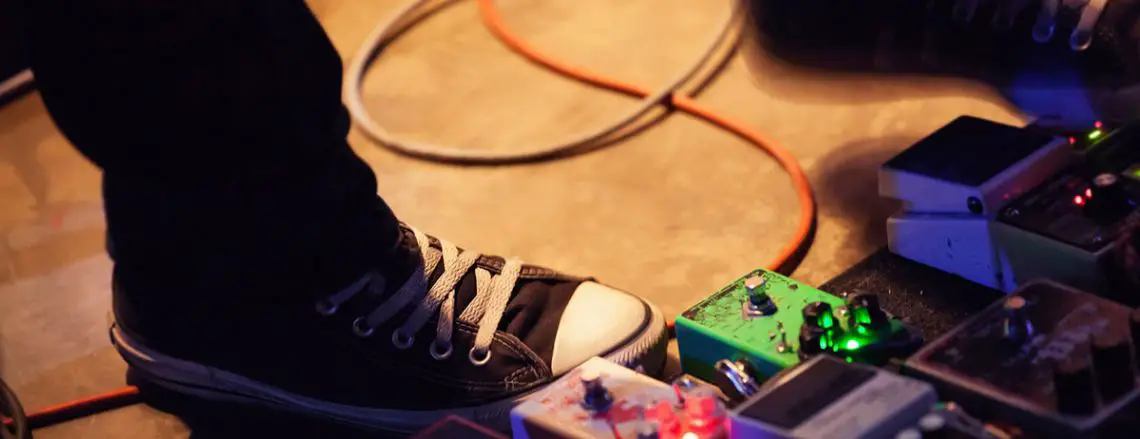






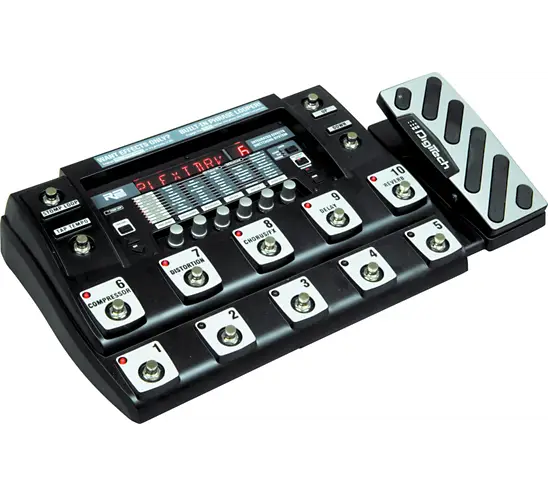




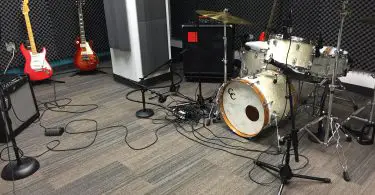
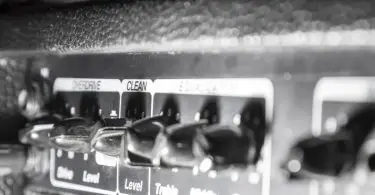
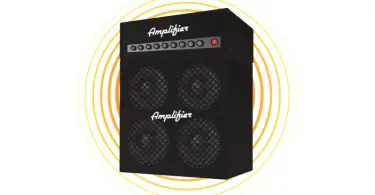
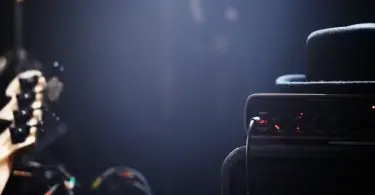
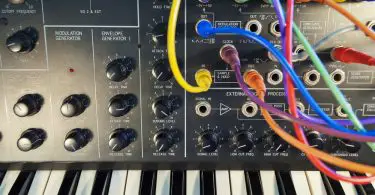
Start the discussion at talk.hearthemusicplay.com